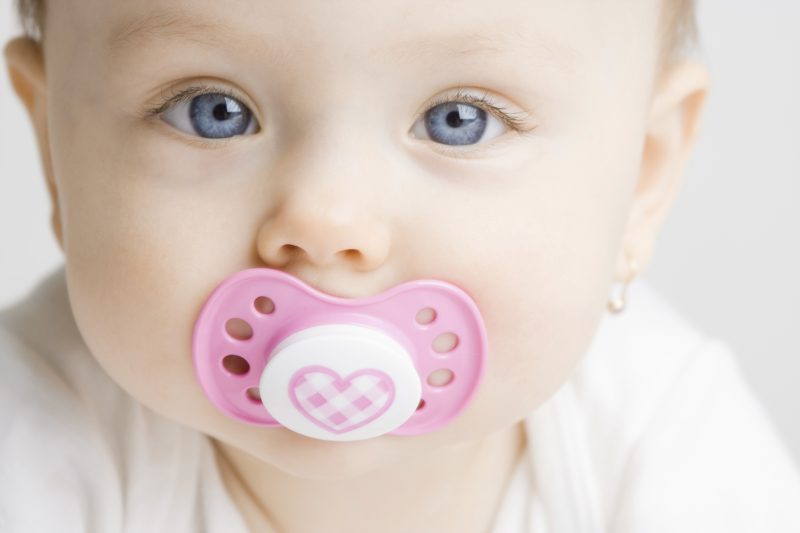
Pacifiers can be a blessing and a curse for many parents. An infant’s innate need to suck can make pacifiers a helpful solution for a fussy baby, but they also can create a struggle, especially when it comes time to take it away.
“When babies are first born, one of the things they’re really good at is sucking so they can eat,” said Dr. Joel Davidson, a pediatrician at Locust Pediatric Care Group at Akron Children’s. “If the baby has eaten and is full, a pacifier can be very helpful to comfort a fussy baby. But, they also can create a constant struggle in the middle of the night after it’s fallen out and your baby needs it to fall back asleep.”
Pacifiers have been shown to be beneficial for baby’s sleep. They can help babies self-soothe and fall asleep on their own. In addition, studies show pacifiers help reduce the risk for sudden infant death syndrome.
But once the pacifier becomes a habit and ingrained in your child’s daily routine, it can be an ongoing battle filled with tears and sleepless nights when it comes time to take it away.
That’s why Dr. Davidson recommends weaning your baby off the pacifier between 6 and 12 months of age. In addition, if kids continue to use a pacifier or even a thumb after 2 years of age, it can lead to dental problems.
“The earlier you do it, the easier it’s going to be,” he said. “The thought is before a child’s first year, she doesn’t have the cognitive ability or the time to form a deep attachment to the pacifier.”
But if you’re like most parents and your child is still clinging to her binky well past her first birthday, Dr. Davidson offers 5 ways to help wean her for good:
- Go cold turkey. Set a date, such as your child’s birthday, when you’ll get rid of the pacifiers. Three days leading up to it, talk to your child about the transition and what’s going to happen to the pacifiers. Together, you can count down the days. Then on that third day, have your child gather up all the pacifiers and dispose of them together. Helping your child prepare might generate excitement for the change.
- Take baby steps. Instead of an abrupt change, wean your child by gradually reducing the times she uses the pacifier. For example, you can start by eliminating the binky in stress-free zones, such as at home and when she’s playing. Then, only allow the binky in the crib at naptime and bedtime. From there, take it away at naptime and eventually bedtime, as well.
- Trade it in. Offer gifts in exchange for the pacifiers. Tell your child about the Binky Fairy, who comes in the middle of the night and leaves a gift in exchange for the binkies. Or, tell her that her doctor needs the binkies for all the new babies being born and if she gives them away, she’ll get a gift in return.
- Read about it. Find books that tell the story of other children giving up their pacifiers. Books, such as “Bye-Bye Binky” by Brigitte Weninger and “Bea Gives Up Her Pacifier” by Jenny Album, can help kids understand getting rid of their pacifiers is a part of growing up and may inspire them to follow suit.
- Replace it. Find new ways to sooth your child and help her settle down. Try introducing some other transitional object to provide the comfort they desire, such as a blanket or teddy bear.
Whatever method you choose, just remember like anything else it’s a transition and may take some time to weather the storm.
“Be prepared to put up with a few really bad nights,” said Dr. Davidson. “Just don’t give in because soon she’ll find other sources of comfort.”










